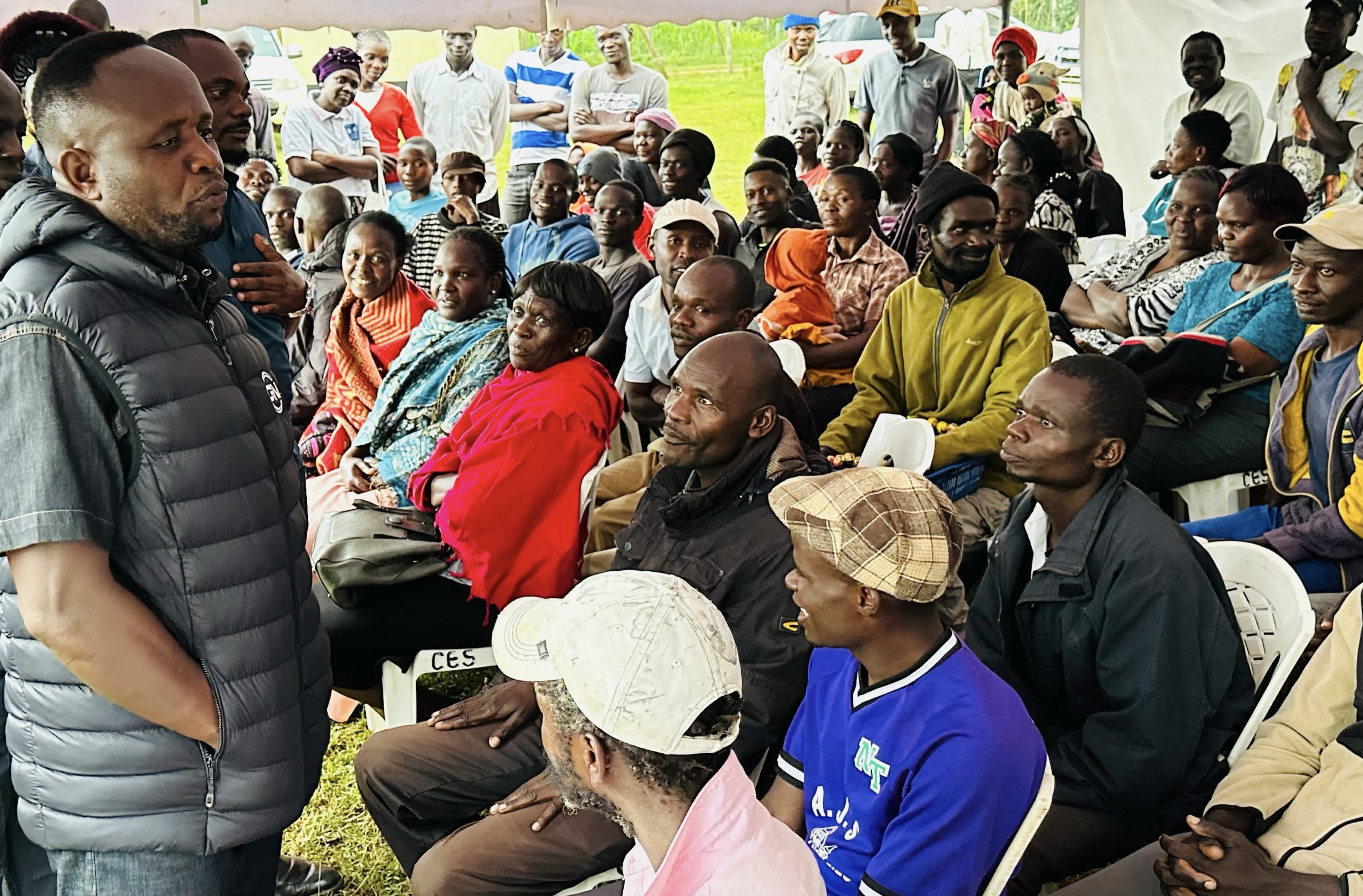
 Trans Nzoia Governor George Natembeya at a public
sensitisation forum /MATHEWS NDANYI
Trans Nzoia Governor George Natembeya at a public
sensitisation forum /MATHEWS NDANYITrans Nzoia County has pledged to
step up efforts to boost routine immunisation after new data revealed coverage rates remain below the national target.
This came despite a recent
nationwide measles-rubella immunisation campaign. At a stakeholders’ forum
convened by the department of health and sanitation in Kitale, county
officials, civil society representatives and local administrators said they will intensify community-driven campaigns to combat vaccine hesitancy and reach
children who have missed their doses.
County immunisation coordinator Celestine Wanyama said they will work with all stakeholders to achieve higher coverage levels.
“Our goal is to dispel myths and misconceptions surrounding vaccines and rally support for routine immunisation,” she said.
Wanyama said the county’s strategy would ensure wide coverage so all
targeted children are reached.
“While Trans Nzoia is performing
well compared to some regions, our coverage still falls short of the national
average,” she said.
Figures from the July 2024–25 period show only 69.5 per cent of children under one year are fully immunised, compared to the national benchmark of 77.3 per cent.
Subcounty
disparities are pronounced, with Saboti leading at 83.7 per cent, while Kiminini
lags behind at 59.4 per cent.
Coverage rates for specific vaccines
show a mixed picture, with BCG at 79 per cent, DPT/Hep+HB3 at 80 per cent, and
the first measles-rubella dose at 81 per cent. Uptake of the second
measles-rubella dose among children under two, however, remains low at 60.2
per cent.
Stakeholders attributed the gaps to
religious and cultural resistance, misinformation, healthcare worker strikes,
vaccine supply delays and economic barriers that prevent parents from
accessing health facilities.
Kiminini subcounty health promotion officer Julius Wachie urged parents to take advantage of services already available.
“All our health facilities—from referral hospitals to
dispensaries—are stocked. We need parents to bring their children.
Collaboration is key if we’re to raise our coverage above the current 69.5
per cent,” he said.
Health workers cautioned that vaccine hesitancy has severe consequences.
A Kitale mother, who lost her three-year-old daughter to measles last year, recounted how she delayed vaccination after being influenced by neighbours.
“I thought the injection would
harm her. By the time I took her to hospital, it was too late,” she said,
fighting back tears.
Assistant county commissioner Beatrice Lukoko said the fight against preventable diseases must become a collective mission.
“We must work together—health officials, local
leaders and civil society—to ensure every child is reached. A healthy
population is not just a moral imperative; it’s economically empowering,” she
said.
To bridge the gaps, the forum resolved to intensify sensitisation through churches, women’s groups and boda boda networks, which play an influential role in shaping community opinion.
With Trans Nzoia’s immunisation rates trailing the national average, officials
are banking on grassroots mobilisation to push the county over the threshold.
“We are committed to ensuring no child is left behind. Every dose counts and every child matters,” Wanyama said.
Governor George Natembeya has also been using public forums to sensitise residents on the need to ensure all children are fully immunised.













